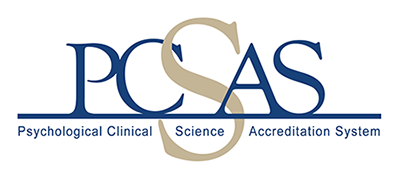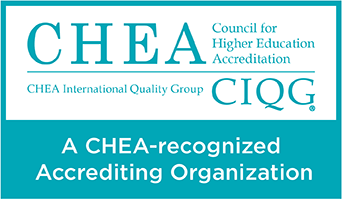Gabriella Memba, M.A., University at Buffalo
Coming from a clinical science background, I approached the predoctoral internship application process as I would a research paper. I spent days upon days scouring the internet and speaking with my colleagues and mentors in an effort to learn as much as I could about the Do’s and Don’ts of preparing for internship. Based on my research, I saw there was a general consensus in recommendations for new applicants. However, I quickly realized that some of the advice fell into two camps– pre-2020 and post-2020. Given the magnitude of Covid-19’s impact, both internship programs and their incoming interns were forced to adjust to the restrictions and modifications caused by the pandemic. As a clinical psychology doctoral student who recently applied to internship sites, I believe it is important to understand the traditional internship structure and the changes that were adopted in 2020 in order to better understand how preparing for internship programs will look in the future.
Traditional Internship Preparation Recommendations
Since 1972, students have relied on the Association of Psychology Postdoctoral and Internship Centers (APPIC) to search and learn about potential internship sites (Kurz et al., 1982). Though browsing APPIC is daunting, one factor that can help you narrow down your list is whether a site is accredited by the APA. Throughout the years, accreditation has become an increasingly important factor for both applicants and internship programs (Madson et al., 2007). The relative shortage of intern positions in accredited sites and number of applicants has led to a number of tips to ensure applicants are competitive.
First, it is recommended that graduate students begin thinking about internship early in their training (Madson et al., 2007). This will allow for time to become familiar with the types of internship programs available and a clearer understanding of what your goals will be in graduate school and beyond. To ensure their students are more competitive when applying for internship, many graduate programs have adjusted their training (Madson et al., 2007). While some programs have occasional seminars that discuss internship, others dedicate entire classes to internship preparation. If you feel your program is lacking in internship preparation opportunities, then you should reach out to your Director of Graduate Studies Training to incorporate this so that you and future applicants can maximize your chance of internship success.
Upon building a list of potential sites, the next step is completing the application materials (e.g., writing essays, cover letters and CVs, identifying letter of recommendation writers). Throughout this process, it is important to be mindful of the selection criteria that internship programs base their admissions on, such as an emphasis on direct clinical experience. In the 1970s and 1980s, sites preferred experience using cognitive-behavioral (CBT) and psychodynamic treatment approaches (Kurz et al.,1982). Since then, familiarity and experience with CBT has grown in popularity (Stedman, 2007). When gaining clinical hours, you should find external practica that are in similar settings as the sites you plan to apply to. This will foster one of the most important factors that determine internship success– match between a program and applicants’ past experiences and future goals. Gaining experiences that fit with your desired programs will allow the internship year to bridge the gap between student and profession, and prepare you for your dream career. Diligently studying the programs that you apply to will help in preparing application materials and interviews. This includes reviewing aspects such as differences in stipend and benefits across programs as you narrow down your preferred sites.
Covid-19 Adaptations for Internship Programs and the Future
Fortunately, many of the recommendations described above still apply to internship preparation post-2020. It is still important to begin thinking about internship early, to take advantage of resources from your program, and to learn as much as you can about the sites you’re interested in. That said, while the “what” of internship applications has remained similar, the same cannot be said about the “how.” For instance, whether your graduate program used a seminar or a formal class to prepare their students for internship, the format of this was likely changed post-covid, especially in 2020 and 2021. Though virtual meetings get the job done, they make it harder to connect with your fellow applicants– whether it be to share tips or just to commiserate about the stress of applying to internship. This shift to virtual contact also impacted the format of interviews. In-person interviews acted as another data point for applicants to determine whether they can really see themselves in a program. That said, there are also benefits to virtual interviews, such as less money spent on travel and less stress when scheduling interviews. Others have also noted more general silver linings to the pandemic, such as prompting conversations around ethics and the accessibility of health care for those unable to use telehealth (Badwan et al., 2020). Those attending internship in the height of the pandemic also described a shift towards valuing work/life balance as students and faculty struggled to manage the stress of living in a pandemic (Blanchette, 2020).
Internship programs– and the world more broadly– continue to shift and adapt to the effects of the Covid-19 pandemic. As of 2022, many internship sites are still conducting virtual interviews due to their convenience for both applicants and sites. Additionally, the clinical work in some sites has adopted a hybrid format, in which interns are able to see clients in person and/or virtually. It is unclear whether these modifications will persist in the coming years. However, as the pandemic ebbs and flows, these changes (and possibly new ones) are likely to stick around for a bit longer. As such, it is of the utmost importance for future applicants to review policies that may have been adjusted due to Covid-19 so that you can stay up-to-date on the latest information. Regardless of whether you apply to internships next year or 25 years from now, perhaps the most important tip to keep in mind is to breathe and remember that internship is just another step in the process.It is not the be-all, end-all of your psychology career!
References
Badwan, M., Carroccia, K., Fleckenstein, A., Gomez, D., Harris, E., Luginbuhl, J., Noonan, C., O’Connor, K., Payes, A., Rabbit, R., Hunt Richardson, A., Rubin, B., Simmons, A., & Turecka, S. (2020). Challenges and considerations for predoctoral psychology interns during a pandemic. Psychotherapy Bulletin, 55(3), 25-30
Blanchette, D. (2020). Surviving predoctoral internship during the COVID-19 pandemic. The Gavel.
Kurz, R.B., Fuchs, M., Daberk, R.F., Kurz, S.M.S, Helfrich, W.T. (1982). Characteristics of predoctoral internships in professional psychology. The American Psychologist, 37(11), 1213–1220. https://doi.org/10.1037/0003-066X.37.11.1213
Madson, M. B., Aten, J. D., & Leach, M. M. (2007). Applying for the Predoctoral Internship: Training Program Strategies to Help Students Prepare. Training and Education in Professional Psychology, 1(2), 116–124. https://doi.org/10.1037/1931-3918.1.2.116
Stedman, J. M. (2007). What we know about predoctoral internship training: A 10-year update. Training and Education in Professional Psychology, 1(1), 74–88. https://doi.org/10.1037/1931-3918.1.1.74


